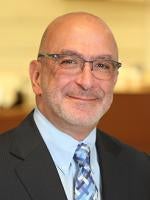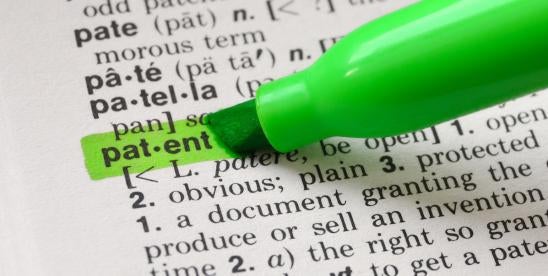On March 18, 2024, the United States Patent and Trademark Office (USPTO) issued a Memorandum containing guidance to help patent examiners analyze claim language that may be interpreted as “means-plus-function” or “step-plus-function” language under 35 U.S.C. § 112(f). The USPTO said that the Memorandum was not a change in practice for examiners. Sometimes, however, how something is said can affect the interpretation of what is said. We will examine some examples of that here.
Background – What Does “Means-Plus-Function” Mean?
Means-plus-function claim language employs generic terms (such as “means” or “device”) in a patent claim to describe a structural claim element by its function. The generic term refers back to the patent specification for details of what is being claimed. The specification’s description for the generic claim term helps to define the term’s scope. The statute, 35 U.S.C. § 112(f), specifies that such generic claim terms are construed to cover “the corresponding structure, material, or acts described in the specification and equivalents thereof.”
Drafting claims in this fashion can be beneficial by allowing a patent applicant to avoid reciting a specific structural element in a claim and instead use the specification to provide a wide range of embodiments for the structural element. For example, a patent specification may describe staples, clips, screws, bolts, and/or rivets. A claim may recite “means for fastening” to cover all of those, even though they fasten in different ways. In a software patent, a claim may recite “a processor for performing” specified functions, and the specification may describe, through an algorithm and/or multiple flow charts, different options for the processor to perform those functions.
What Means Do Examiners Have to Examine “Means” Terms?
The Memorandum tells examiners that their “broadest reasonable interpretation” of a claim term in means-plus-function format is tied to the patent specification, whereas a claim recitation of structure does not have to be. As a result, when 35 U.S.C. § 112(f) applies, the means-plus-function term should receive a narrower interpretation than a non-means-plus-function term. A narrower interpretation will mean that an examiner will be required to apply a narrower range of prior art. If an examiner applies an exceedingly broad scope of prior art to reject a means-plus-function claim, a patent applicant may be able to argue against the rejection on that basis.
A patent applicant who wishes to use means-plus-function language to claim an invention functionally must ensure that the patent specification contains sufficient detail to show how a claimed function is to be performed. The examiner will have to evaluate the disclosure under 35 U.S.C. §§ 112(a) and (b) to determine whether the functional claim terms are clearly defined and adequately supported in the written description. If the examiner does not find clear definition and adequate support, the examiner may reject the claim for inadequate written description under 35 U.S.C. § 112(a) and/or indefiniteness under 35 U.S.C. § 112(b). The patent applicant should also ensure that all contemplated means for performing a recited function are identified and described in the specification.
When Does a Claim Term Mean “Means”?
The Memorandum tells examiners that a claim element is presumed to be a means-plus-function term if the limitation explicitly uses the term “means” or “step” and includes functional language. In addition to “for” as a transitional phrase, other such phrases may include “means for,” “configured to,” and “so that.” However, an applicant can overcome this presumption by coupling, in the claim itself, the “means” or “step” with the structure, material, or acts for performing the function. For example, “means for cutting” could be written as “blade means for cutting,” implying that the term could cover scissors, razors, knives, and the like. If the patent specification mentions a knife but not a razor or scissors, “means for cutting” could have a narrower interpretation than “blade means for cutting.”
A claim element that does not use the term “means” or “step” is presumed not to invoke 35 U.S.C. § 112(f). However, when the claim includes a generic placeholder term such as “device” or “apparatus” instead of “means” or “step” but does not implicate specific structure that performs the function, then the examiner may interpret the element under 35 U.S.C. § 112(f).
The Memorandum states that there is no approved list of generic placeholders (“nonce” words) that are substitutes for “means.” Terms such as “mechanism for,” “module for,” “device for,” “unit for,” “component for,” “element for,” “member for,” “apparatus for,” “machine for,” and “system for,” have been found to be generic placeholders and therefore “means” terms. There are times when examiners try to extend this list, relying on the lack of an “approved list.”
An applicant may be able to argue against an examiner’s labeling of a term as means plus function if the term in fact implies structure on its own. Software-related terms such as “code,” “application,” “program,” and “user interface” have been found not to be generic placeholders, as the terms connote structure when used in combination with the function performed by the code or application. If an examiner construes one of these software terms as means plus function, an applicant can argue against such a construction.
Takeaways
Patent practitioners should be mindful of the use of nonce terms (i.e., terms the USPTO says have no structural meaning), and be prepared to argue with the examiner if the examiner misses structure in a claim term the examiner construes as means-plus-function.
If/when an examiner applies prior art with embodiments not corresponding to means-plus-function terms in the claims, patent practitioners may be well-advised to argue against the application of that prior art.




 i
i


